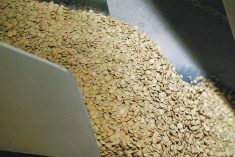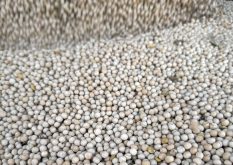China’s long run as the world’s most populous country is over as India is expected to surpass it this year.
The United Nations estimates India will creep past China’s 1.46 billion and continue to grow, while China’s population will continue to shrink, a legacy of its one child policy that ran from 1980 to 2016.
As the world’s largest importer of food and feed, China has for more than a decade been a leading factor in any discussion of global food trade. And it will likely continue to be so for the near future.
Read Also

Huge Black Sea flax crop to provide stiff competition
Russia and Kazakhstan harvested huge flax crops and will be providing stiff competition in China and the EU.
But if, over time, China’s population does age and shrink — indeed some projections show it could fall below one billion by the end of the century — that will have a profound influence on food trade.
As India grows, could it take over from China as the leading importer of crops and meat?
No one knows how the coming decades will play out, but if you compare the two Asian giants, it is clear India is no China in waiting, at least not in the foreseeable future.
India is making great strides economically and this year is growing faster than China, but it has a long way to catch up.
China’s nominal gross domestic product in 2021, as measured by the World Bank, was the second largest at US$17.7 trillion, behind the leader, the United States, which came in at $23.3 trillion
India was number six with $3.2 trillion, about the same as the United Kingdom.
By another measure called purchasing power parity, which adjusts for the cost of living among countries, India does better.
In PPP-adjusted GDP, China becomes the largest economy at $27.3 trillion, and the U.S. comes in second at $23 trillion.
India is third at $10.2 trillion, but China is still more than 2.5 times bigger.
Breaking down the nominal GDP wealth on a per person basis shows China and India are far behind western countries.
The U.S. GDP per capita is more than $69,000, according to UN figures. China is far behind at about $12,500 and India is even further behind at $2,277.
India has a far larger percentage of its population in poverty, unable to afford much more than a subsistence diet.
But also, India has more cultivatable land than China so it can grow more food.
Also, the religious makeup of India’s population impacts the food they eat.
China is the world’s largest importer of food, at $204 billion in 2021. India imported $29 billion.
Of China’s total imports by value, a lot is focused on meat and soybeans for livestock feed. Soybeans accounted for about 23 percent, frozen pork and swine products about seven percent and frozen beef five percent.
By contrast, India’s smaller food imports focus on vegetable oil. About 27 percent was for crude palm oil, 14 percent crude soy oil and eight percent sunflower oil.
Lentils accounted for less than two percent of imports.
Canada’s agrifood and seafood exports to China were large at C$9.4 billion in 2020. Canada was the sixth largest supplier.
Canada’s food exports to India in 2021 were C$546 million, mostly in lentils. We were their 18th largest supplier.
China is a big meat producer and consumer.
Domestically, in 2022 it produced about 51.8 million tonnes of pork and imported 2.15 million tonnes, consuming it all domestically, whereas India produces little pork.
In beef and carabeef (water buffalo), China in 2021 produced 7.1 million tonnes and imported another 3.1 million tonnes, consuming it all domestically.
India’s beef and carabeef production was 3.95 million tonnes, of which 2.75 million tonnes were consumed domestically and 1.2 million tonnes were exported.
The difference in meat production is associated with India’s religions.
The majority Hindu population avoids eating beef while the second largest religious group, Muslims, avoid pork.
A Pew research survey found that 81 percent of Indian adults follow some restrictions on meat in their diets. About 39 percent identify as vegetarian.
So India is unlikely to present a big market for meat-exporting countries.
Another factor that could work in favour of India forgoing large food imports is its ability to produce food.
India’s arable land suitable for crop cultivation and pasture is almost 395 million acres compared to China’s 254 million.
And there is potential to increase yields on its large base of farmland.
According to U.S. Department of Agriculture figures, India’s average wheat yield is about 50 bushels per acre, whereas China’s is almost 90 bu. per acre
Improved agronomy and agricultural technology in India could raise yields and make it possible for the country to continue to be largely self-sufficient.

















